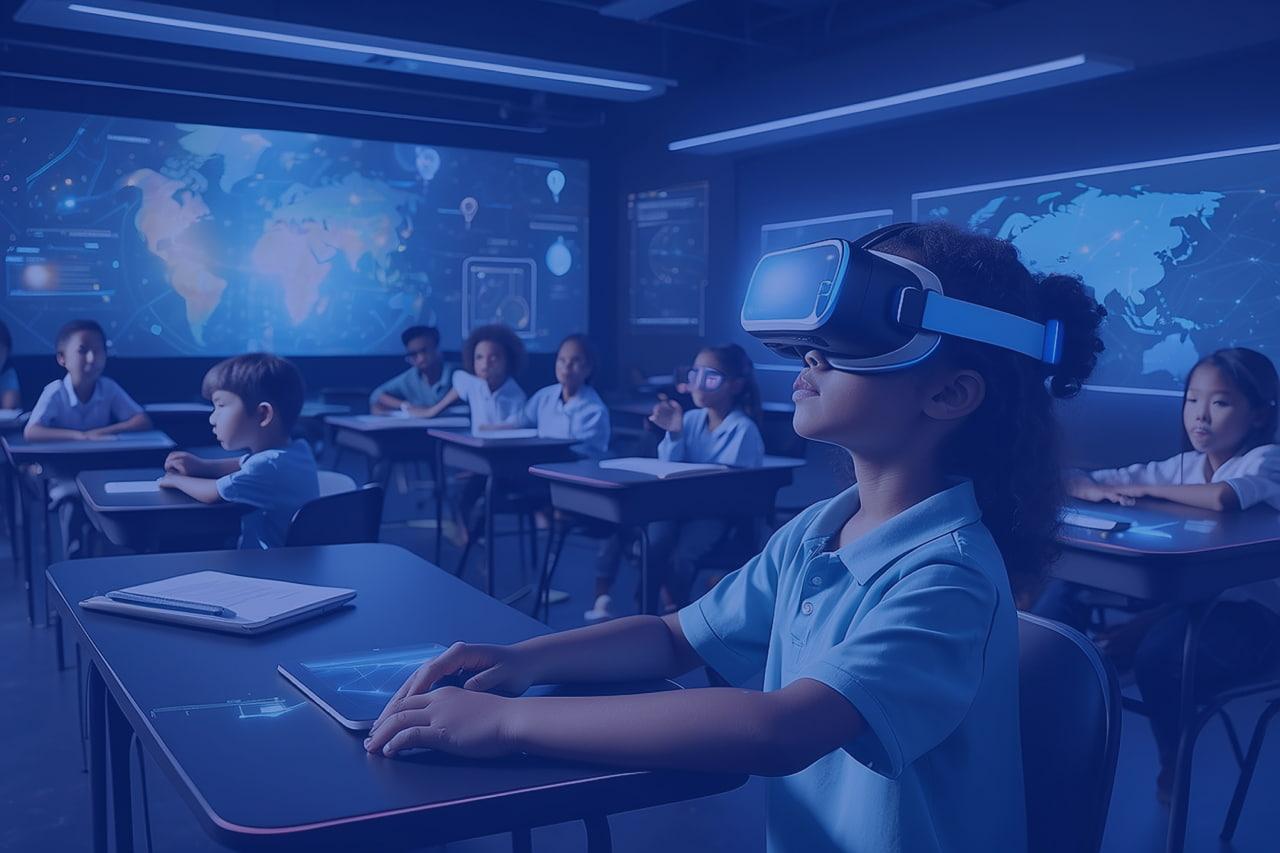Revolutionizing Education: How VR/AR Enable Immersive Learning in the Modern Classroom
Introduction: The Digital Leap in Modern Classrooms
The customary classroom is evolving.With the advent of Virtual Reality (VR) and Augmented Reality (AR) technologies, immersive learning is rapidly becoming the gold standard in modern education. These cutting-edge tools not only engage students more deeply but also open up entirely new worlds of exploration and understanding. In this article, we’ll discover how VR/AR are revolutionizing education, breaking barriers, and creating interactive classrooms that empower both teachers and students.
What Are VR and AR in Education?
Virtual reality (VR) and augmented reality (AR) refer to technologies that alter or enhance our perception of reality. In educational contexts:
- VR creates a completely virtual, computer-generated habitat were students can interact with 3D simulations and scenarios — think virtual science labs or time-travel to ancient civilizations.
- AR overlays digital facts (like images, animations, or data) onto the real world, often using tablets, smartphones, or AR glasses — for example, seeing an animated beating heart over a textbook diagram.
These technologies help educators bring abstract concepts to life and transform passive learning into dynamic, hands-on experiences.
The Benefits of Immersive Learning with VR/AR
- enhanced Engagement: Students are more motivated and attentive when lessons are interactive and visually stimulating.
- Improved Understanding: Complex topics, such as molecular biology or astronomical phenomena, become easier to grasp when visualized in 3D.
- Active participation: Learners move from passive recipients to active explorers, boosting retention and comprehension.
- Safe Learning Environments: VR allows students to safely experiment with hazardous science reactions or emergency responses without real-world risks.
- Accessibility for All: AR/VR can cater to diverse learning styles and abilities, adapting to individual student needs.
- Global Exploration: Virtual field trips take students anywhere — from the Pyramids of Giza to the surface of Mars — right from the classroom.
Real-World Applications: How Classrooms Are Using VR/AR
1. Virtual Field Trips
Imagine visiting the Louvre or experiencing the Amazon rainforest without leaving your school. VR field trips let students explore geography,history,and cultures worldwide,all in stunning detail.
2. Interactive Science Labs
With VR, students conduct chemical reactions, dissect virtual frogs, or practice engineering challenges in a safe, controlled setting. AR can overlay 3D models of human organs onto workspaces for hands-on biology studies.
3. Collaborative Problem Solving
VR and AR encourage teamwork and critical thinking. Platforms like CoSpaces Edu or ZSpace allow students to collaborate on building virtual structures or solving math puzzles together.
4. Special Education support
Immersive technology is a powerful tool for students with learning differences. VR/AR can provide individualized instruction and adaptive environments to suit various needs and learning speeds.
case Studies: VR/AR Success Stories in Education
Stanford Virtual Human Interaction Lab
Stanford University’s lab developed VR programs allowing students to experience what it’s like to live with disabilities or in different socio-economic situations. The result: Increased empathy and social awareness among participants.
The Google Expeditions Program
used by thousands of schools, Google expeditions brought AR and VR to classrooms, letting students take hundreds of virtual field trips and interact with enhanced 3D content, making lessons more memorable and accessible.
First-Hand Experience: Voices from the Classroom
“My students are more eager than ever.When they put on a VR headset and walked through ancient Rome, I saw a new level of curiosity and engagement I’d never seen with textbooks alone.”
— Mrs. Johnson, 7th Grade History Teacher
“As a teacher of students with special needs, AR has been a game-changer. It allows me to tailor lessons, visualize concepts, and make learning truly inclusive.”
— Mr. Lee, Special Education Instructor
Practical Tips for Integrating VR/AR into Your Classroom
- start Small: Begin with low-cost or free AR educational apps before investing in headsets or complex setups.
- Focus on Curriculum Integration: Choose VR/AR experiences that align with your teaching objectives for maximum impact.
- Ensure Accessibility: Ensure that the technology and content are usable by all students, including those with disabilities.
- Train Educators: Offer workshops and professional development for teachers to become agreeable and creative with the tools.
- Measure Impact: Gather feedback and data on engagement and learning outcomes to refine your approach and showcase success.
overcoming Challenges: Considerations for Successful Adoption
While the promise of VR/AR in education is immense, schools shoudl be mindful of:
- Budget constraints — Seek grants, phased rollouts, or partnerships with tech companies.
- Technical support — Ensure IT teams are equipped to maintain devices and troubleshoot issues.
- Safety and hygiene — Clean shared headsets and provide health guidelines for use.
- Content quality — select age-appropriate, pedagogically sound content from trusted sources.
The Future of Education: Where Immersive Learning is Heading
As VR/AR technology advances,the possibilities for educational transformation are unlimited.artificial intelligence (AI) and machine learning may soon enable AI-assisted virtual tutors and hyper-personalized lesson plans. The metaverse — a persistent,shared virtual space — could become tomorrow’s global campus,connecting learners from every corner of the world.
Conclusion: Empowering Students with Immersive learning
VR and AR are truly revolutionizing education, providing unprecedented opportunities for immersive, interactive, and effective learning. As these technologies become more accessible, educators are better equipped to inspire, engage, and empower the next generation of learners. The modern classroom is no longer confined by four walls — with VR/AR, learning is everywhere.
Are you ready to bring the power of immersive learning to your classroom? Start exploring VR and AR educational solutions today — and unlock a world of possibilities for your students!

